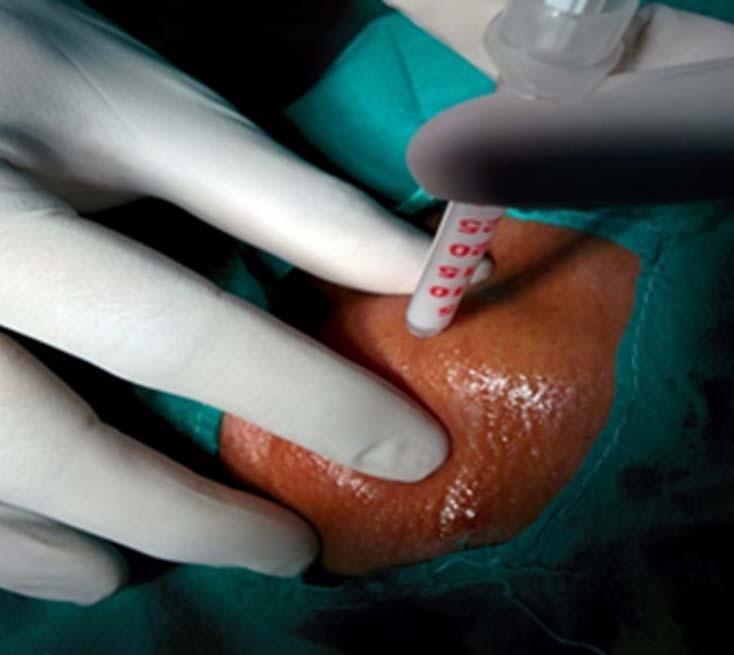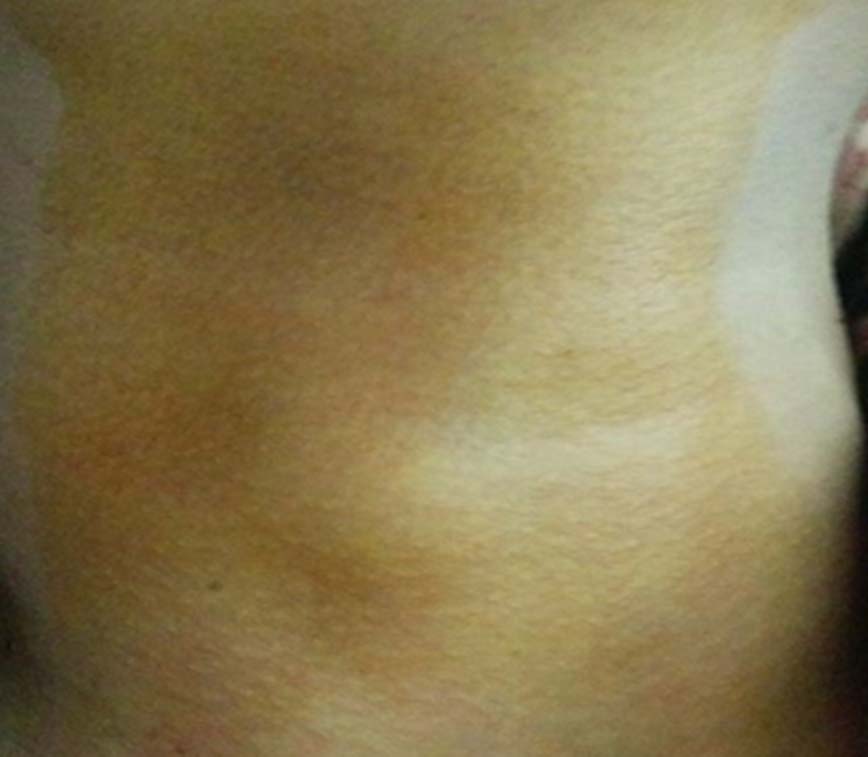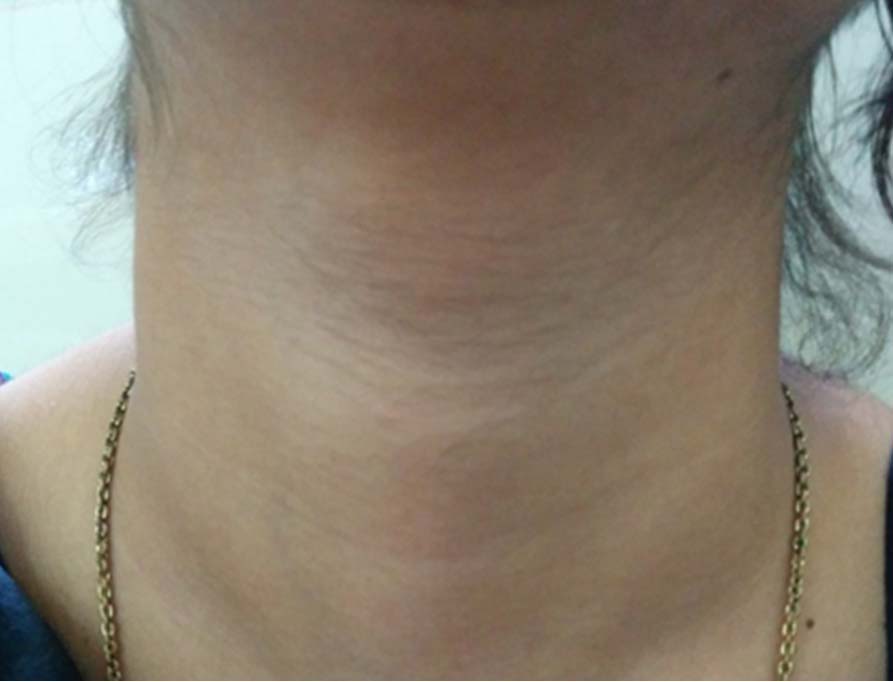Benign thyroid swelling disorders are common conditions, frequently encountered in clinical practice, either during physical examination or incidentally, during various imaging procedures. They are clinically important primarily due to their malignant potential. Thyroid swelling disorders are most common in females, and sometimes are considered as a blemish to their features.
Though medical management has been useful in treating the hormonal variations, it has not been very significant in reducing the size of the swelling. Ermans observed that prolonged administration of iodine and thyroid hormones, for six months to two years, was highly effective in reducing the size of the goitre, but that was for endemic goitres only [1]. Vladmir recommended “antistrumin”, which is used for prevention of iodine deficiency in regions with low iodine water and food content [2]. But here again, the duration of the treatment was 6-12 months. Although these medications are effective in combating disease, their full benefits are often not realized because many patients do not take their medication as prescribed.
Surgery, being the definitive line of treatment for the thyroid swellings, is associated with complications and may affect the quality of life. Equally, they are not happy with a postoperative scar in the neck following a thyroidectomy surgery although modern surgery with its improved technique is in a broad sense, free from ugly scars.
Hence the need for a nonsurgical, minimally invasive modality of treatment for reduction of the size of thyroid swellings has always been a challenge. This study was done to define a newer modality of nonsurgical treatment for benign thyroid swelling disorders by injecting triamcinolone intralesionally.
Materials and Methods
A total of 20 patients were selected for this study who attended the Otorhinolaryngology Head and Neck Surgery OPD of Chigateri District Hospital and Bapuji Hospital, Teaching Hospitals attached to JJM Medical College. The study was done during the period of October 2014 to May 2015. Institutional ethical clearance was obtained for the study prior to its commencement.
All the patients with thyroid swellings were evaluated with history and clinical examination followed by routine blood investigations, Thyroid function tests (T3, T4, and TSH), Fine Needle Aspiration Cytology (FNAC) and Ultrasonography (USG) of the neck. Diagnostic features suggestive of malignancy were excluded from the study. Cystic lesions harbouring malignancy can sometimes be missed in FNAC, and so were excluded from the study. Pregnant and lactating patients were not included in the study. Patients whose USG showed size of the swelling less than 4cm, with contraindication to or refusal for surgery were selected for the study. Cases of bilateral thyroid lobe swellings with individual size less than four cm were also selected for the study. Only patients with normal thyroid hormone levels were included in the study. Patients were informed about the study, procedure involved, outcomes and complications. Patients were included in the study after taking written informed consent.
The treatment adopted in this study was intrathyroid injection of triamcinolone. This is available in the form of acetonide salt in the concentration of 40mg/ml (kenacort 40 mg).
Patient was put in a supine position. Under strict aseptic precautions the neck was painted and draped. Thyroid swelling palpated and fixed with index and thumb of one hand, using insulin syringe triamcinolone was injected intralesionally [Table/Fig-1]. A dose of 20 mg of the steroid was injected once a week for 4 weeks and if both the lobes were involved, then 20 mg of the steroid was injected in each lobe.

Regular follow up visits were done at third week, third month and sixth month after the completion of treatment schedule. Patients were advised to review immediately if any complication occurs. Clinically size of the swelling was assessed during each visit and repeat USG was done during third follow up. Blood sugar levels, both fasting and postprandial were assessed in all the cases prior to the procedure. These tests were also repeated during the follow up.
Results
This study comprised of 20 patients, all of whom were females in the age group of 17-55 years. Four patients did not come for regular follow up and hence were excluded from the study. The highest incidence of benign thyroid swellings in our study was found to be in the age group 20-30 years. A histopathological diagnosis of colloid goitre was found in 12 patients, Hashimoto’s thyroiditis in two patients and adenomatous hyperplasia in two patients.
Two patients developed giddiness following the intrathyroid injection and recovered spontaneously without any active intervention. There were no similar symptoms seen on subsequent injection. There was no marked decrease in size of the swelling noted in between the treatment schedule.
Thirteen (81.25 %) patients showed excellent results with no visible swelling [Table/Fig-2,3]. The reduction in size was also confirmed sonologically during the third follow up. Two patients (12.5%) showed fair results with residual swellings, and one patient did not show any reduction in size of the swelling. Complications such as haematoma formation, infection at the injection site and anaphylactic reaction were not seen in our study. There were no reports of impaired blood sugar levels in patients following triamcinolone injection.


Discussion
Benign thyroid disease is common with thyroid dysfunction affecting around 2% of women and 0.2% of men in the UK. Thyroid nodules are common disorders, frequently discovered in clinical practice, either during physical examination, or incidentally, during various imaging procedures. The gender disparity is perhaps explained by the hormonal influences of both oestrogen and progesterone.
Thyroid nodules are common, their prevalence being largely dependent on the identification method. The estimated prevalence by palpation alone ranges from 4% to 7%, whereas USG detects nodules in 20% to 76% of the adult population, particularly with the current use of high-resolution USG techniques. The reported frequencies detected by USG correlate with the prevalence reported at surgery and autopsy with ranges between 50% and 65%.
The Framingham study in the United States indicated a 5–10 percent life-time risk of developing a thyroid nodule [3], and the Whickham survey in the north-east of England reported a 15 per cent prevalence of goitres or thyroid [4].
The most widely used form of imaging is ultrasonography, which has many favourable features including detection of nodules not detected clinically, estimation of nodule size/goitre volume (e.g. To monitor the effect of therapy) and guidance of FNAC additionally, high resolution ultrasound can detect thyroid nodules in 19–67 percent of individuals, with higher frequencies in women and the elderly, even when the gland is normal to palpation [5].
FNAC remains the gold standard for evaluating thyroid nodules. Most clinical practice guidelines recommend FNAC for nodules greater than 1 cm in largest dimension [6–8]. When the FNAC result is clearly benign or malignant, then the decision for further treatment including thyroidectomy becomes evident. The false-negative rate for FNAC is 1–3%. The false negative rate increases to 10–15% when the nodule is large (> 4 cm) [8–10]. Other clinical scenarios where the clinician should not always trust a benign FNAC result include patients with a family history of thyroid cancer, patients with a history of radiation exposure, and cystic nodules [11]. Cystic nodules that repeatedly yield non-diagnostic aspirates need close observation or surgical excision [12].
Majority of patients with thyroid enlargement can be managed conservatively; the presence of lump in the neck gives rise to concern about the possibility of malignancy. The challenge to the surgeon is to diagnose cases suspicious of malignancy, and confirm this minority of patients with thyroid cancer who need definite surgical intervention and additional therapies as required. Suppressive T4 treatment has historically been used to reduce goitre size. Although some studies have shown benefit, size of thyroid nodules or goitres often resumes after discontinuation of thyroxin, meaning therapy may need to be life-long. Suppressive therapy necessarily induces a state of subclinical hyperthyroidism (suppression of TSH) with risks of atrial fibrillation and reduced bone density as previously outlined. For these reasons the use of suppressive therapy has been abandoned by most thyroidologists [13].
Triamcinolone is a long acting synthetic steroid that can be given, intralesional and topical. Spain concludes in his study that corticosteroids inhibit the inflammatory response irrespective of inciting agent, whether it is mechanical, chemical or immunological [14]. He also suggests that the anti-inflammatory action of steroids depend up on the direct local action. Percutaneous ethanol injection has led to volume reduction of more than 85% from baseline size with a success in 80-85% of cases [15,16].
Grolman and Grolman mentioned in their study that glucocorticoids have a depressing effect on the host’s immune response and thus abolish the allergic and/or inflammatory response [17]. Dibartolomeo et al., recommended the use of triamcinolone at the conclusion of excision of keloid in view of preventing the rate of recurrence of keloids [18]. JC Sanasam did a study comprising of 73 female patients and three male patients. The female: male ratio was 24:1. The highest age incidence was seen in the age range of 21-30 years. About 69 out of the 76 cases, i.e. more than 90% showed excellent results, four cases (5%) showed fair results and three cases (3.9%) have poor results, where there was no sign of reduction in the size of the swelling [19].
Limitations
The exact mechanism of action of triamcinolone in benign thyroid swellings is not known. Cytological and molecular profiling during the study period may help in understanding the exact pathogenesis of the benign thyroid swellings and the mechanism of action of steroids in these conditions. We feel that use of triamcinolone intralesionally for benign thyroid swellings is safe and effective in reducing the size of the swellings, which avoids surgery and also prevents morbidities associated with it. As our study had small case series and hence further studies with large sample size and long term follow up is required.
Conclusion
After ruling out malignancy by using FNAC and USG, benign thyroid swellings of size less than 4cms can be managed effectively to reduce its size with minimally invasive technique using intrathyroid injections of triamcinolone with minimal or no side effects. However further studies with large sample size and long term follow up is required.